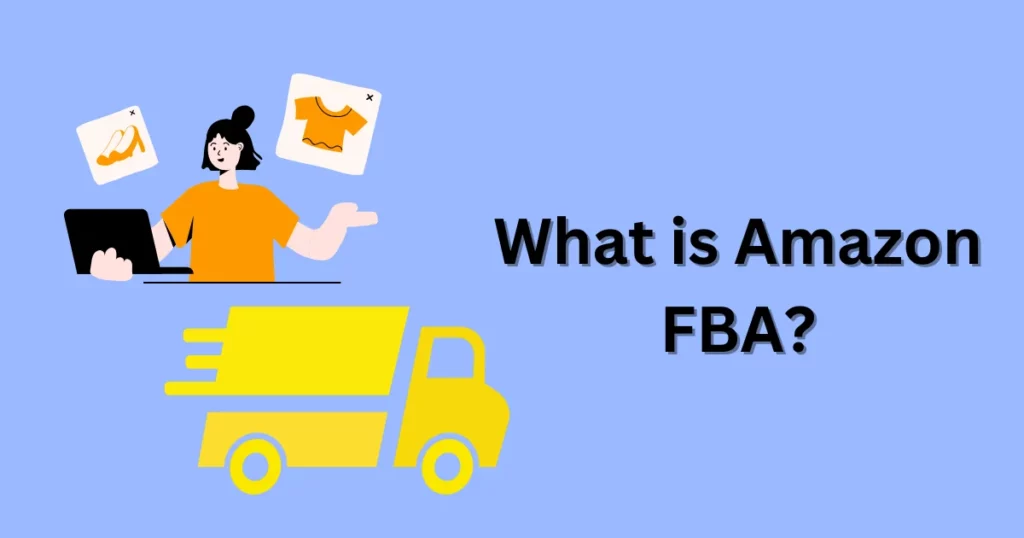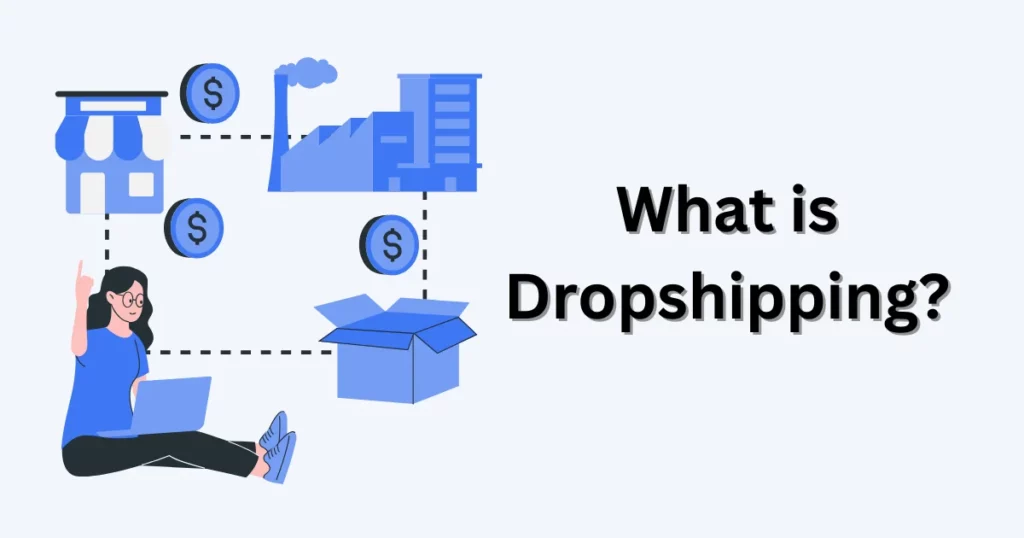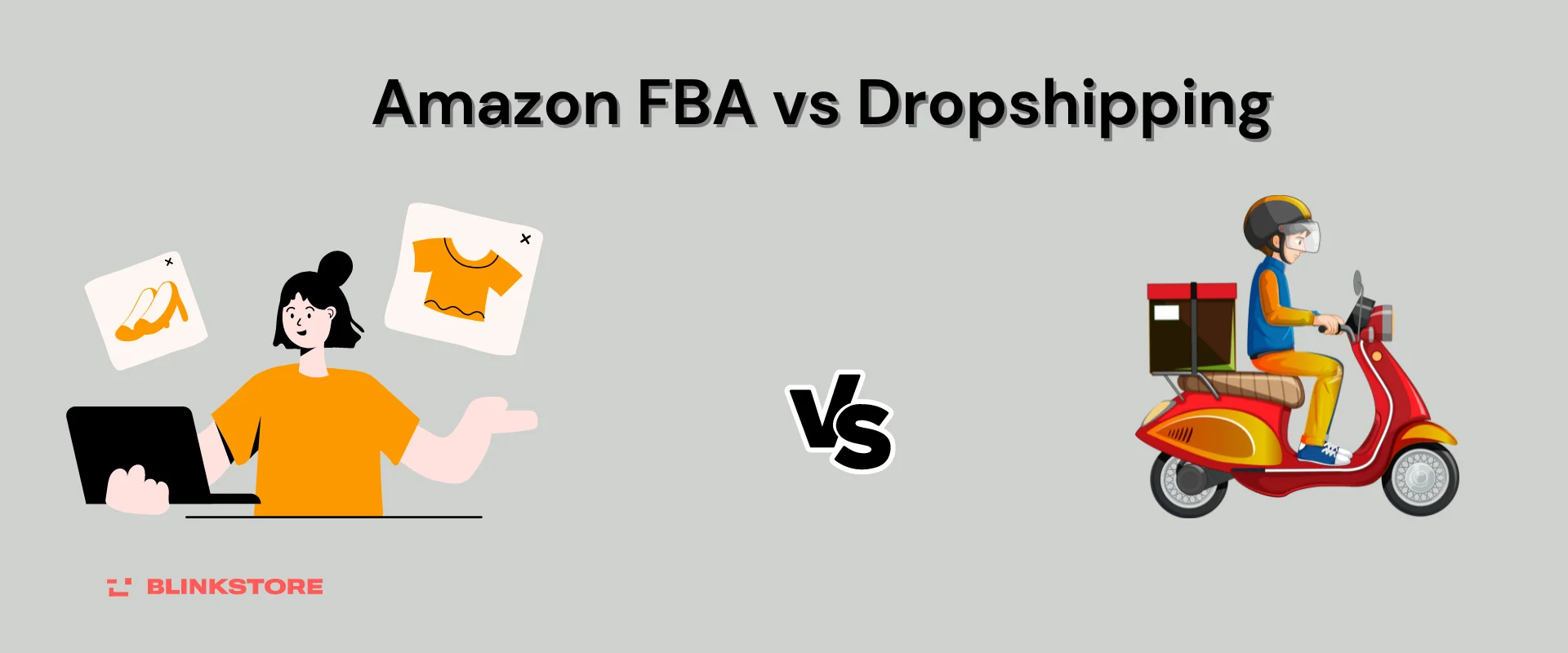In recent years, Amazon FBA and dropshipping have become popular ways to start an e-commerce business. Business owners enjoy these models’ help with order processing and shipping, which are crucial for streamlining operations and managing many orders.
Therefore, choosing a better business model is vital when launching an online business. Each model has specific advantages and challenges that appeal to different entrepreneurial goals.
This post will explore and outline their pros and cons, compare their differences, and help you decide the best choice for selling products online.
Table of Contents
What is Amazon FBA?

Amazon FBA (Fulfillment by Amazon) simplifies e-commerce selling by storing products in Amazon’s fulfillment centers. When a customer buys, Amazon handles packing, shipping, and customer service.
Sellers benefit from Amazon’s logistics expertise, Prime membership perks, and expanded customer reach. FBA is ideal for scaling businesses without extensive investment in logistics. All you have to do to use FBA as an Amazon seller is ship your goods to Amazon Fulfillment Centers.
Did you know that as of 2024, Amazon Prime is estimated to reach 180 million members in the US alone? Leveraging FBA can help tap into this vast customer base and drive sales.
Pros and Cons of Amazon FBA
Amazon FBA offers significant benefits for sellers. Still, there are a few drawbacks.
Pros of Amazon FBA:
- Prime Eligibility: Products stored in Amazon’s warehouses qualify for Amazon Prime benefits, ensuring fast and free shipping for customers. This perk boosts sales and enhances customer satisfaction. For instance, an electronics seller can attract more buyers by offering Prime shipping.
- Scalability: Amazon FBA accommodates businesses of all sizes, enabling growth from startups to established enterprises. This flexibility allows sellers to expand their product range and reach.
- Customer Trust: By leveraging Amazon’s renowned reliability and exceptional customer service, sellers can build trust and confidence with buyers. This trust often leads to higher conversion rates and customer loyalty.
- Global Reach: With Amazon’s extensive fulfillment network. FBA enables sellers to reach customers globally. This access to international markets can broaden your customer base and increase sales opportunities.
- No Customer Support Needed: Amazon FBA handles customer service, including inquiries, returns, and refunds, relieving sellers of this responsibility.
- Easy Returns and Refund Policies: Amazon’s FBA program offers streamlined processes for returns and refunds, enhancing customer satisfaction and simplifying order issue resolution.
Cons of Amazon FBA:
- Fees: While convenient, using FBA incurs fulfillment and storage fees that can impact profit margins, especially for low-margin products. For example, a seller of affordable accessories may find that FBA fees eat into their profits.
- Limited Control: Sellers using FBA have less control over aspects like packaging and shipping times. Which can sometimes pose challenges in meeting specific customer expectations.
- Competition: The popularity of Amazon FBA has led to increased competition among sellers on the platform. This heightened competition makes it harder for sellers to differentiate solely based on their products.
- Storage Limitations: Amazon’s storage limits and fees for excess inventory can pose challenges for sellers managing large inventories or seasonal products. It’s important to optimize inventory levels to avoid excessive storage fees.
- Policy Changes: Amazon frequently updates its policies and fees, impacting FBA sellers. Staying informed about policy changes and adapting strategies accordingly is crucial to maintaining a successful FBA business.
What is Dropshipping?

Dropshipping is a business model where sellers list products online but don’t keep inventory. When a customer orders, the seller buys from a third-party supplier who ships directly to the customer. This minimizes upfront investment and logistics.
It’s a viable strategy for those willing to find reliable suppliers and markets. It’s ideal for new entrepreneurs with limited resources or experience in online retail.
Global e-commerce sales are projected to exceed $225.99 billion by 2024. Dropshipping taps into this market growth, providing a flexible entry point into e-commerce for entrepreneurs.
Pros and Cons of Dropshipping
Dropshipping has a lot to offer sellers. There are a few drawbacks, though.
Pros of Dropshipping:
- Low Barrier to Entry: Dropshipping requires minimal upfront investment in inventory. Making it accessible to individuals looking to start an online business with limited resources.
- Flexibility: The dropshipping model allows sellers to experiment with different products and dropshipping niche markets without the risk of holding excess inventory. This flexibility enables entrepreneurs to adapt quickly to changing consumer preferences.
- Location Independence: Dropshipping enables vendors to provide a wide selection of goods. That is sourced from multiple suppliers. Providing freedom and flexibility in terms of work location. This feature appeals to digital nomads and individuals seeking a remote lifestyle.
- Diverse Product Range: Dropshipping allows sellers to offer a diverse range of products. That is sourced from multiple suppliers. This variety enables niche market targeting and experimentation with different product categories to identify profitable opportunities.
- Scalability: Dropshipping facilitates rapid business growth and scalability. Sellers can quickly scale up by adding new products. Also, expand into new markets without the dropshipping fullfillments constraints of managing inventory.
Cons of Dropshipping:
- Supplier Reliability: Dependence on third-party suppliers can introduce challenges related to product quality and shipping times. Ensuring reliable supplier partnerships is crucial for maintaining customer satisfaction and brand reputation.
- Lower Profit Margins: Increased competition in the dropshipping space and reliance on suppliers often result in lower profit margins compared to traditional retail models. Sellers need to optimize pricing strategies and maximize profitability.
- Customer Service Challenges: Managing customer expectations and handling returns can be complex without direct control over inventory. Effective communication and proactive problem-solving are essential to mitigate customer service issues.
- Inventory Management: Without physical inventory control, dropshipping sellers may encounter difficulties in tracking stock levels and addressing supply chain disruptions. This can impact order fulfillment and customer satisfaction if not managed effectively.
- Quality Control: Ensuring product quality and consistency can be challenging when relying on suppliers to fulfill orders. Maintaining high standards and conducting regular quality checks are essential to uphold customer trust and loyalty.
Amazon FBA vs Dropshipping: What is the Difference?
The key difference between Amazon FBA and dropshipping lies in the handling of inventory and fulfillment. With Amazon FBA, sellers own the inventory and use Amazon’s infrastructure for storage and fulfillment. In contrast, dropshipping eliminates the need for inventory, relying on third-party suppliers to fulfill orders. Here is a comparison table:

Amazon FBA vs Dropshipping: Which is Better?
Deciding between Amazon FBA and dropshipping depends on your business objectives and risk appetite. Amazon FBA suits sellers aiming to capitalize on Amazon’s brand and robust logistics network. Meanwhile, dropshipping is for those seeking a low-cost entry into e-commerce.
When comparing Amazon FBA and dropshipping, consider the following factors:
- Business Goals: If you prioritize leveraging Amazon’s reputation and Prime benefits to reach a broader audience, Amazon FBA may be the preferred choice. For instance, a seller of electronics may benefit from Amazon’s trust and fulfillment capabilities.
- Budget: Dropshipping offers a more budget-friendly approach as it eliminates the need for purchasing inventory upfront. This model suits entrepreneurs with limited capital seeking to minimize financial risk.
- Risk Tolerance: Find your risk tolerance when choosing between the two models. Dropshipping involves less financial commitment but may pose challenges related to supplier reliability and customer service.
Read more: Amazon Dropshipping: The Best Guide to Make Money Online in 2024
Our verdict
In our opinion, dropshipping is preferable to Amazon FBA for several reasons. Dropshipping requires minimal investment and risk, making it accessible to entrepreneurs on a budget.
It offers flexibility in product selection and allows you to adjust offerings based on market trends. Dropshipping also provides location independence. Letting you manage your company from any location with an internet connection.
With drop shipping, you can focus on marketing and customer experience. Leading to stronger relationships and higher conversions. It’s a scalable model ideal for ambitious entrepreneurs seeking rapid business expansion. Overall, dropshipping offers autonomy, low risk, and scalability. Making it a desirable choice for online retailers.
Pro Tips for Making the Right Choice:
- Evaluate Profit Margins: Calculate potential profit margins considering fees and expenses associated with each model to determine which aligns better with your financial goals.
- Consider Product Type: Certain products may perform better with Amazon FBA due to customer expectations around shipping speed and quality, while niche or trending items could thrive with dropshipping flexibility.
Start Dropship with Blinkstore

Now that you understand dropshipping and Amazon FBA. You can also see that dropshipping is the better choice. Let’s get to know how to dropship with 0 cost in Blinkstore.
Sign Up on Blinkstore
Visit Blinkstore and create a Blinkstore account using your Google account or by entering your email address manually.
Set up Your Store and Add Designs
Click “Create Store” and choose a name for your store or drop-shipping business. Your store will be live on store-name.blinkstore.in initially and can be connected to your custom domain.
Start Selling
Browse Blinkstore’s products category, select the ones you want to sell, and upload your designs. List the products in your store, and you’re ready to start selling across India with your chosen profit margins. When you make a sale, your profits will appear in the payout section for withdrawal to your bank account.
Conclusion: Choosing the Better Business Model for 2024
Choosing between Amazon FBA and dropshipping is critical for entrepreneurs launching online businesses in 2024. Amazon FBA leverages Amazon’s robust infrastructure, offering Prime benefits, scalability, and customer trust. Despite fees and limited control, FBA appeals to sellers tapping into Amazon’s vast customer base.
Conversely, dropshipping offers low-risk entry, flexibility, and product variety, ideal for budget-conscious entrepreneurs seeking autonomy.
Consider your objectives, budget, and risk tolerance when deciding between Amazon FBA and dropshipping. In our assessment, dropshipping is preferable for flexibility and scalability in 2024’s e-commerce market. Just make a small initial investment and concentrate on growth and marketing.
We hope this blog has delivered valuable content for your eCommerce journey!
FAQs on Amazon FBA vs Dropshipping
Here are some frequently asked questions about Amazon FBA vs Dropshipping.
Which is better: Amazon FBA or dropshipping?
The decision between dropshipping and Amazon FBA is based on your preferences, budget, and business objectives. Amazon FBA offers access to Amazon’s Prime benefits, scalability, and customer trust but comes with fees and limited control. Dropshipping, on the other hand, requires minimal upfront investment, offers flexibility, and can be operated from anywhere. Over all dropshipping is considered to be the better choice.
Is Amazon FBA always profitable?
Amazon FBA can be profitable. Between $1,000 and $25,000 was the monthly income for about 50% of Amazon sellers, mostly from Amazon FBA. Successful FBA sellers optimize their operations and manage costs effectively. They adapt to market trends to maximize profitability. Conduct thorough research into Amazon FBA to ensure a viable and profitable business model.
What is better than dropshipping?
There isn’t a sure answer to it better than dropshipping. As it depends on individual preferences and business objectives. Some alternative business models to dropshipping include print-on-demand, wholesaling, private labeling, and affiliate marketing.
What’s better than Amazon FBA?
Similar to dropshipping, identifying what’s “better” than Amazon FBA depends on your business goals and circumstances. Alternative models to Amazon FBA include traditional retail, wholesaling, fulfillment by merchant (FBM), and self-fulfillment.
Is Amazon FBA selling easily?
Selling on Amazon FBA can be both rewarding and challenging. While Amazon provides a streamlined platform and access to a vast customer base. Navigating fees, competition, and policy changes requires dedication and strategic planning. Success on Amazon FBA involves market research and product differentiation. And effective inventory management, and continuous optimization of your selling strategy. While it may not be easy.
